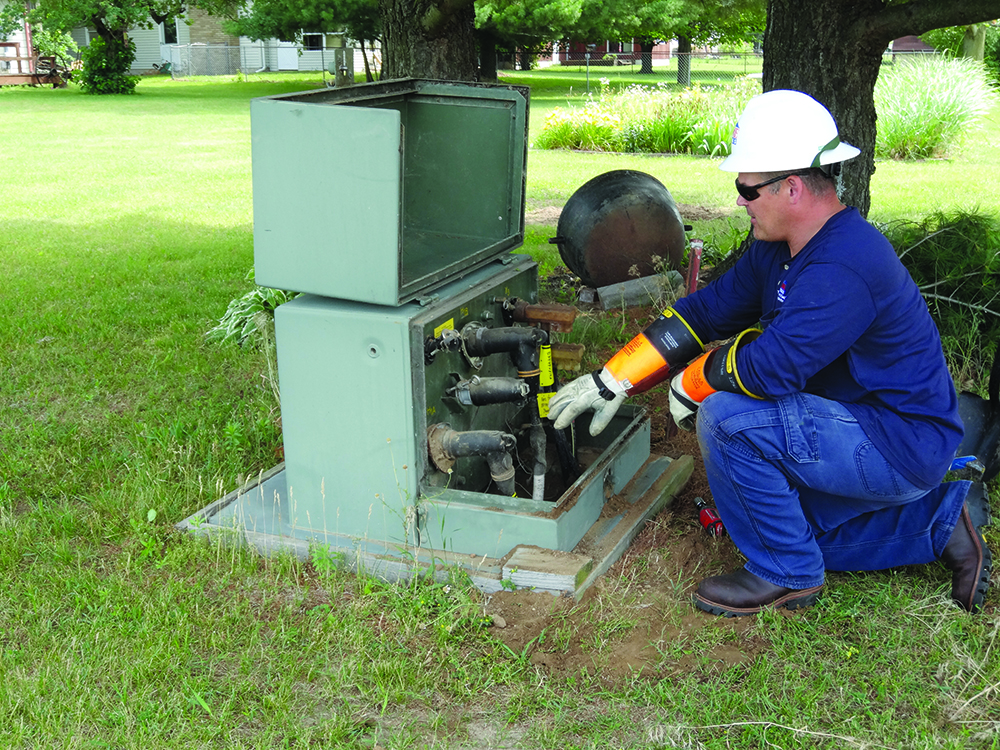Underground power and the big green box

Transformer pads look harmless, but don’t be fooled
Electricity might flow into your neighborhood over your head or under your feet. It’s easy to spot wires on top of those wooden poles and figure out how electricity gets delivered by overhead lines. But there’s also a way to deduce that you’ve got underground lines: Look for green metal boxes about the size of a mini-fridge sitting in your front yard, or your neighbor’s.
They’re called pad-mounted transformers and they do the same thing as those gray cans up on top of the poles: they step higher-voltage electricity down so it’s more useful and safer for your home. The major difference is a pad-mounted transformer connects to underground power lines.
No one’s exactly sure what share of power lines in the United States are underground, but one industry study estimated 18 percent. To a lot of people, underground lines look better. But they’re a lot more expensive to install. And while falling trees and cars crashing into poles can knock out aboveground power lines, underground problems can be more difficult to pinpoint and correct.
The big green boxes that connect power lines look surprisingly simple inside—wires come in and go out through the transformer.
Now that you know what they are, you don’t have to go looking inside, and you shouldn’t. Those locked boxes are routing a lot of electricity, so only expert lineworkers should be near the equipment.
Never use pad-mounted transformers as benches while waiting for the school bus, and kids should never play on or near them. Don’t plant landscaping around pad-mounted transformers because our crews may need to get to them, and roots can interfere with the underground wires. Never dig near a pad-mounted transformer; remember to dial 8-1-1 for any outdoor projects that require digging.
Whether you’re around underground or overhead utility equipment, the same safety rules apply: Stay away from power lines.

